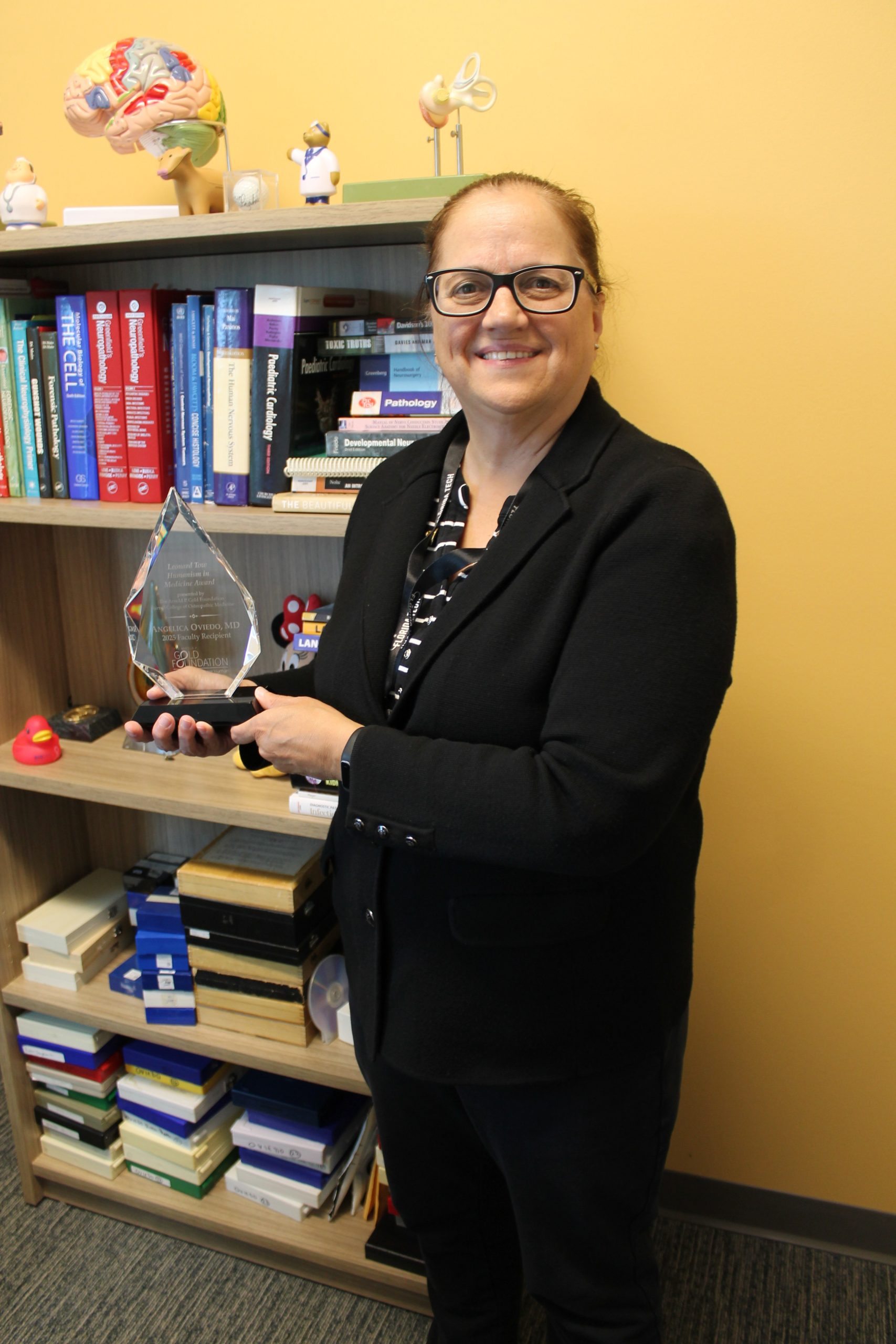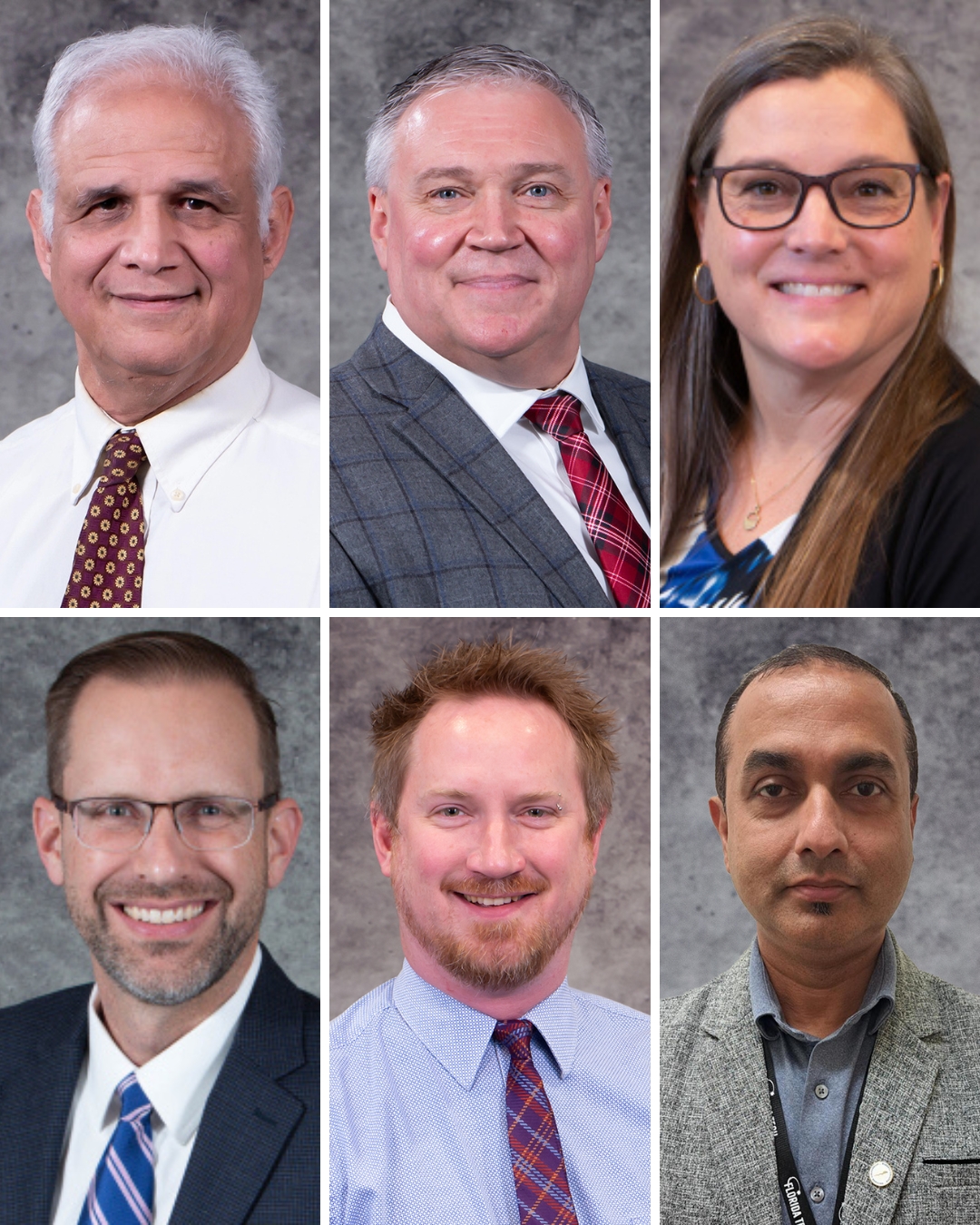
Robyn Marks didn’t grow up wanting to be a doctor. Seeing herself as a more of the engineer type, she studied biomedical engineering at Case Western Reserve University in Cleveland and worked in a tissue engineering lab for almost four years. “My job was making polymer scaffolds to seed stem cells and essentially re-grow bones. That’s how I got interested in orthopedics,” she said.
She started volunteering at the cancer center across the street from the lab, and interacting with the patients became the favorite part of her day. She realized she wanted to approach her passion for engineering from more of a clinical standpoint and hopefully have a more personal impact on her patients. Now, as she’s nearing the end of her second year at the Burrell College of Osteopathic Medicine, Marks says that, despite the rigors of medical school, she somehow keeps finding herself back in the lab. Since last December, she’s been working under the guidance of Dr. Reza Foudazi from NMSU’s Chemical Engineering Department to improve prosthetic limbs for amputees.
Marks explained that the silicone linings currently used in prosthetics are non-porous and hydrophobic, and thus create a hot and wet environment that can have major implications for the wearer. “Mechanically, these products work very well in terms of providing support, but since they don’t allow anything to flow through, the risk of developing an infection is high,” she explained. Since a large portion of amputees are diabetics or cancer patients going through chemotherapy, their bodies aren’t equipped to effectively heal wounds, and studies show that five year survival rates get cut in half once an infection sets in.
Marks recently spoke about her project at the International Women’s Forum hosted by the Arrowhead Center at NMSU. To get her point across, she used an analogy that most women can relate to: the pain of breaking in new shoes. She herself had developed a blister from the new high heels she wore to the event, and she used that as a jumping off point to explain her research in laymen’s terms. “My blisters are uncomfortable for tonight, but what if I was going through chemo? That blister could be life or limb threatening,” she said. “Wearing a new prosthetic limb is like wearing a new pair of shoes. When I want to feel confident, I wear these red heels. Imagine if I couldn’t wear them. Now imagine if you can’t wear the limb that helps normalize your life and what that does to your confidence.”
Right now, solutions to the problem are primarily retrograde—they’re only employed once a skin issue has already arisen. Marks is tackling it from a different angle. She’s taking her biomedical engineering experience and adding in what she’s learning in medical school to create a product that has all the “mechanical robustness” the current product offers, but still wicks away moisture and allows the air flow necessary to avoid skin infections.
Instead of “reinventing the wheel”, she’s been adapting materials the NMSU lab had previously developed for other purposes. Simply put, she likens the process to creating a salad dressing: “You have an oil phase and a water phase, and we shake them up and mix them all together, but before they can separate, we polymerize it so it gets stuck in a structure that is similar to the current product, but has porosity.”
She’s been working in the lab with the assistance of NMSU graduate student Ryan Zowada and they’ve already worked out the base structure of the material. Now, it’s about fine tuning to create the optimal balance between mechanical stability and breathability. Marks says our bones have a fascinating organization of polymers, so she is trying to appropriate into the design biological polymers that will mimic the natural functions of the human body. “Basically, we’re taking the lab’s completely synthetic material and trying to see if we can make it a little more biologic. Because the body does so many cool things on its own, we don’t have to work at forcing it to do what we want it to do. Eventually, we want to come up with a range of polymers so if the patient is say, an athlete and needs something more mechanically robust, we can tune it to that end of the spectrum. Or, if they are a heavy sweater, we can tweak it on that end,” she explained.

Marks has patent-pending status on her materials, and expects to have a full patent by the fall. She’s also joined forces with post-doctoral student Neda Sanatkaran, Ph.D., who is working with Arrowhead Center and leading the business aspect of the project. Through programs like Aggie I-Corps and LAUNCH, they are working to obtain licensing for the product and garnering the attention of investors. One private company has already expressed interest and has scheduled a site visit in April.
While she’s excited about getting her product on the market, Marks isn’t at all interested in going into business. She sees herself practicing as an orthopedic surgeon, ideally in a research hospital, and she has related interests in sports medicine and oncology. Her aim is to combine the technical thought process of an engineer with the anatomical and physiological knowledge of an osteopathic physician, who also understands the importance of patient-centered care.
Creating a product that will benefit amputees of all income levels has been a driving force for Marks’ research, and it has already sparked ideas for other prosthetic-related projects. Through her involvement with the Arrowhead Center, she met an amputee who reinforced that she’s on the right path. “He told me, ‘You don’t wake up every day feeling disabled, but there’s at least one thing every day that reminds you you are.’ To a healthy person, a skin issue may seem so low on the totem pole, but there are days he doesn’t go out with friends because of the way his prosthetic irritates his skin or because of the pain. He said that chipping away at one little problem can have so much impact—physically, mentally, socially, economically—for people suffering through the same thing. Basically, we’re hoping to find a new way to attack a really common problem.”








